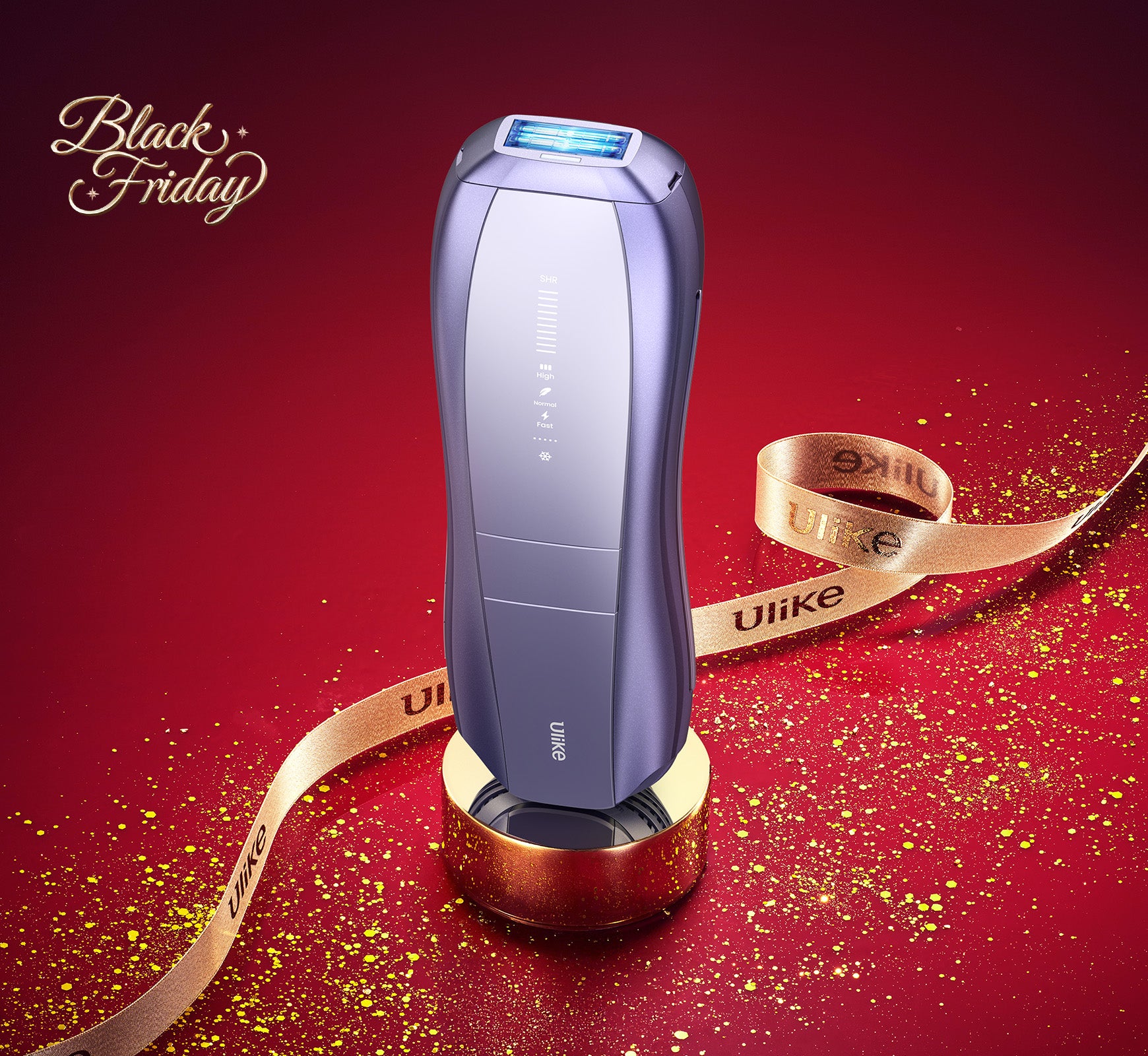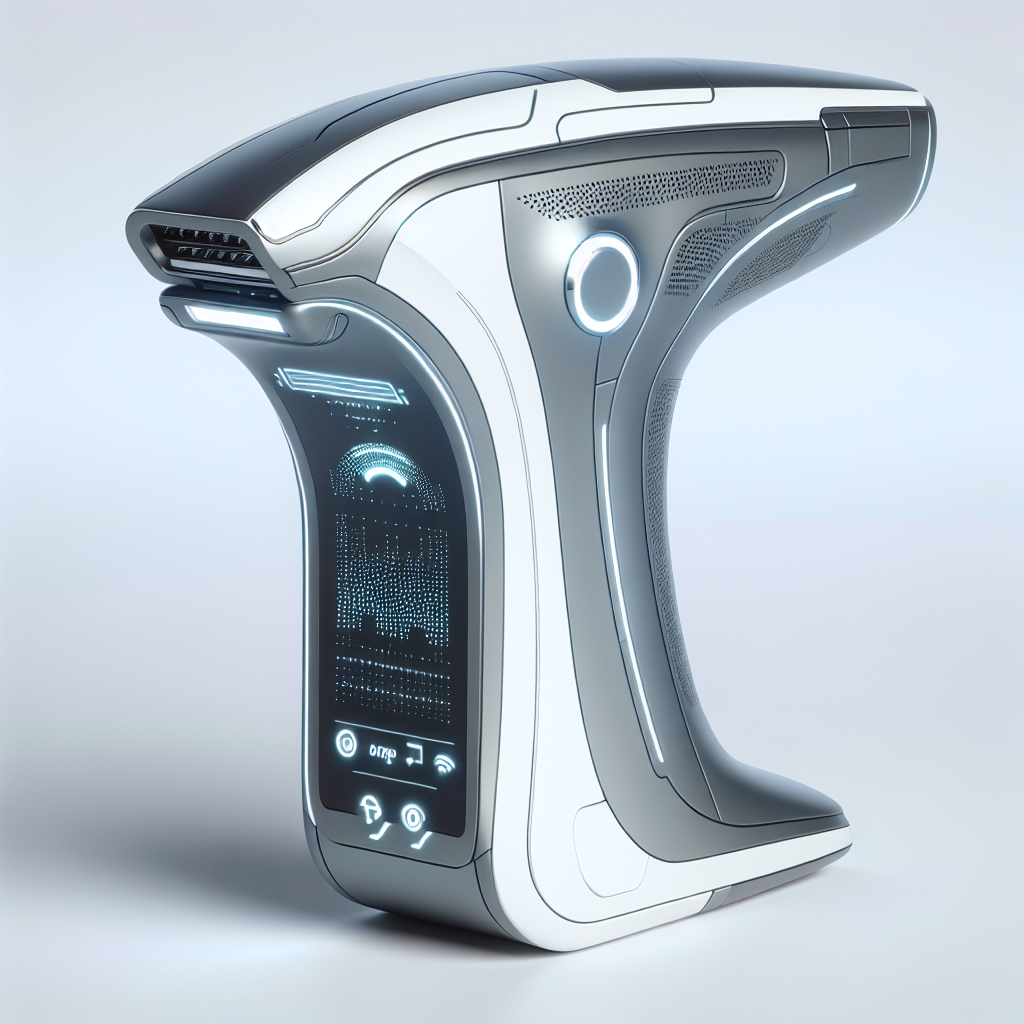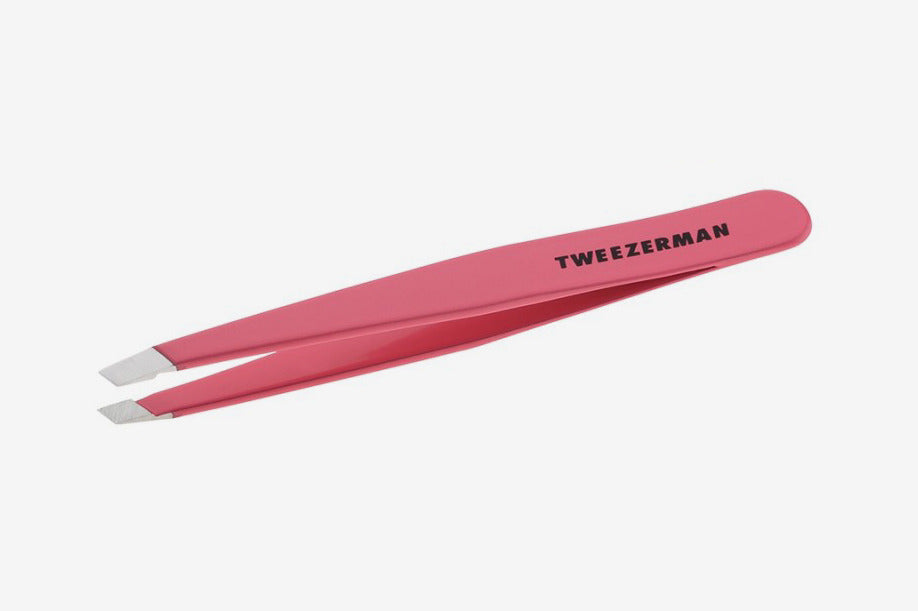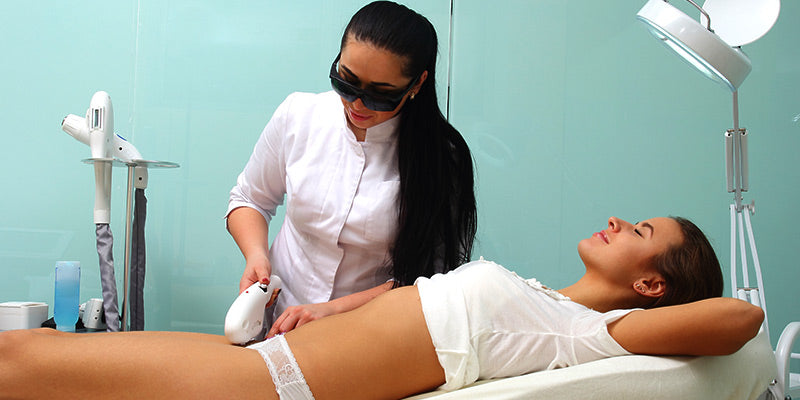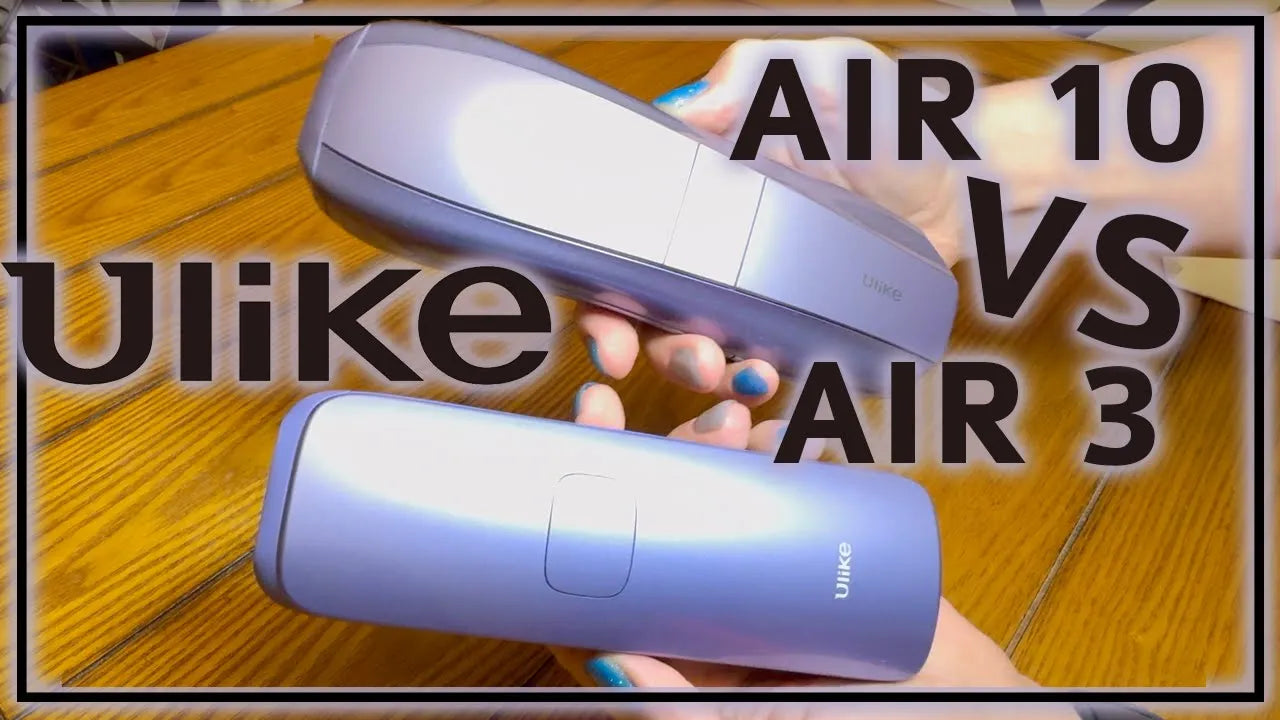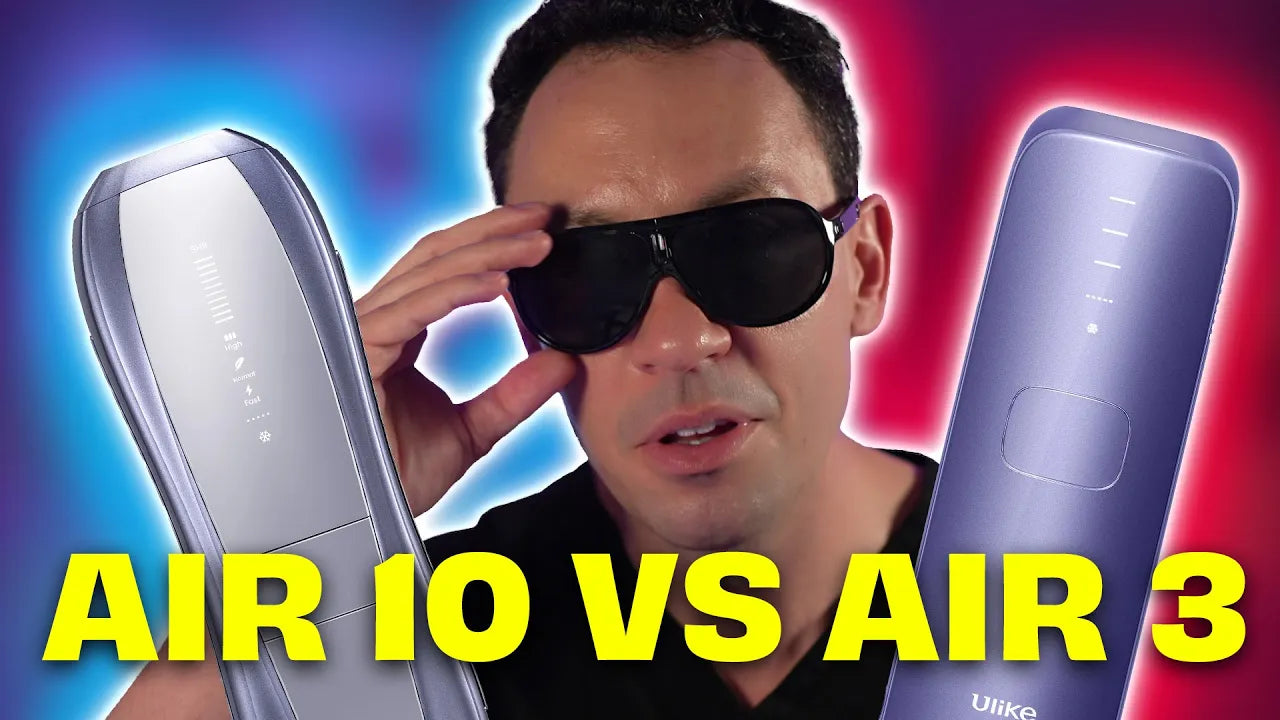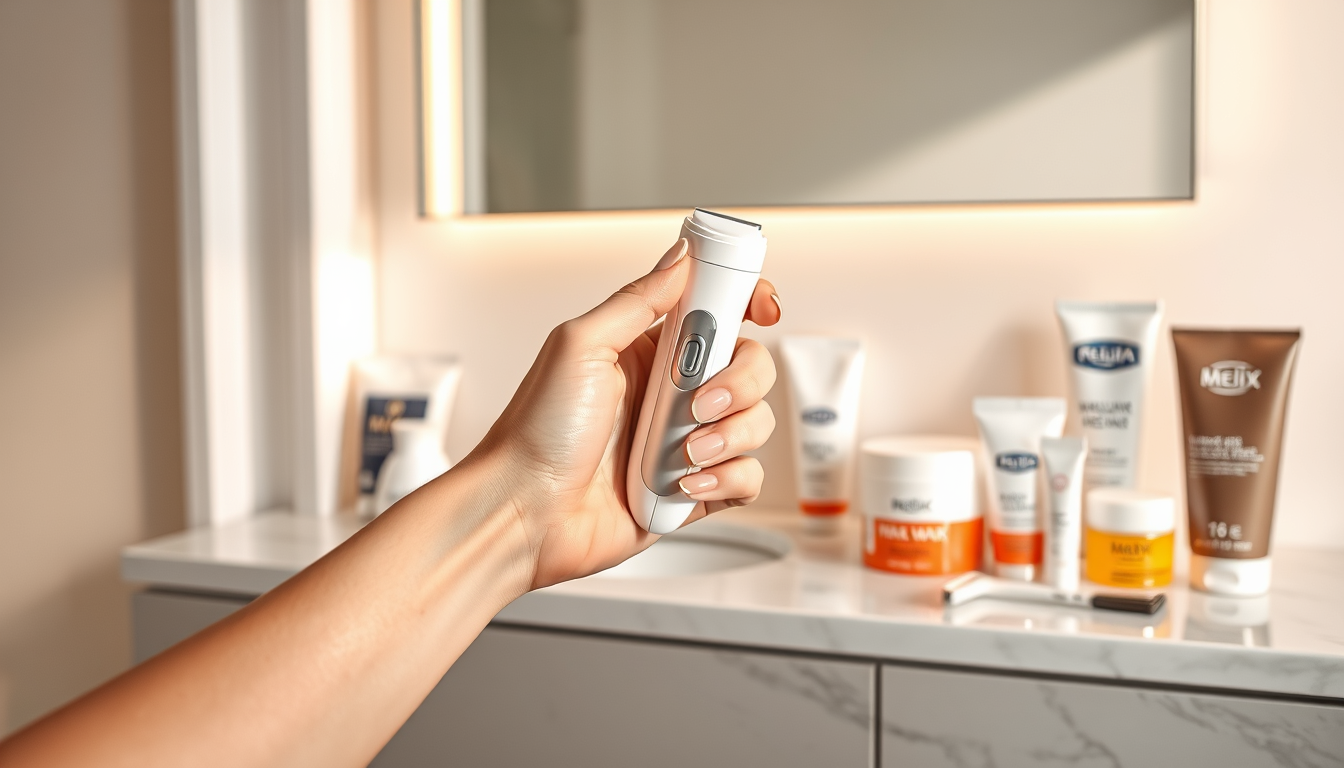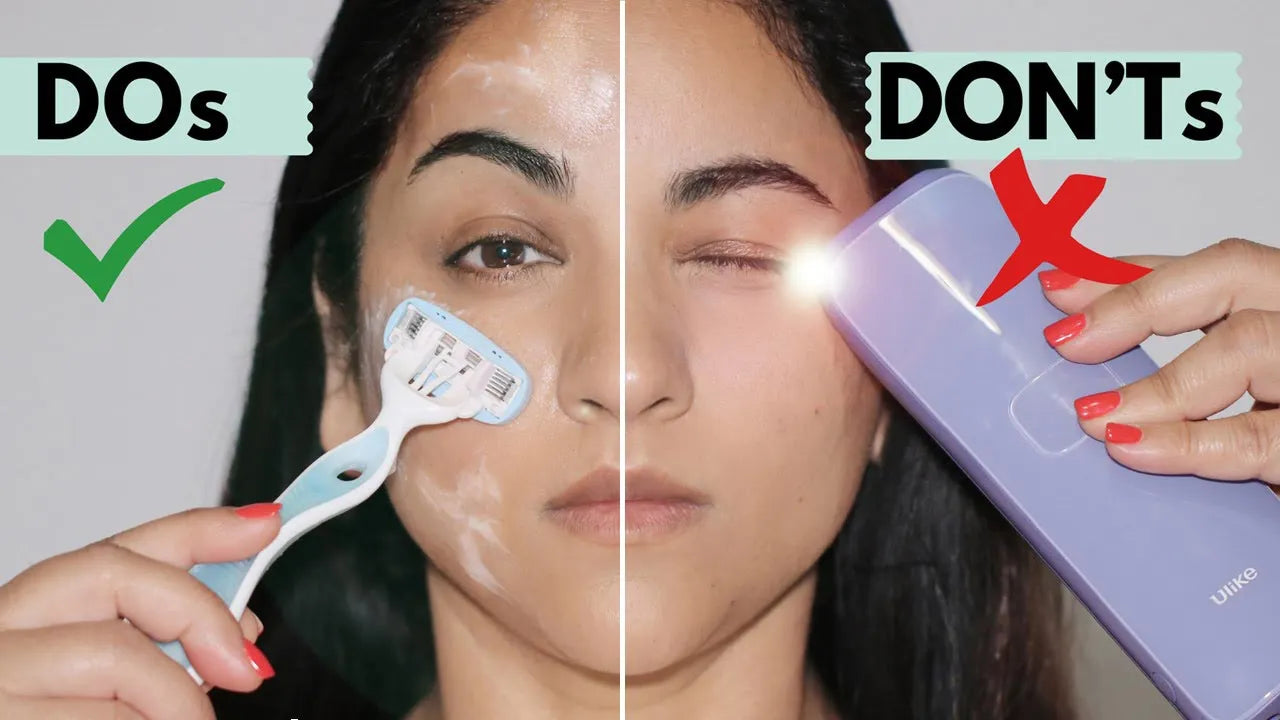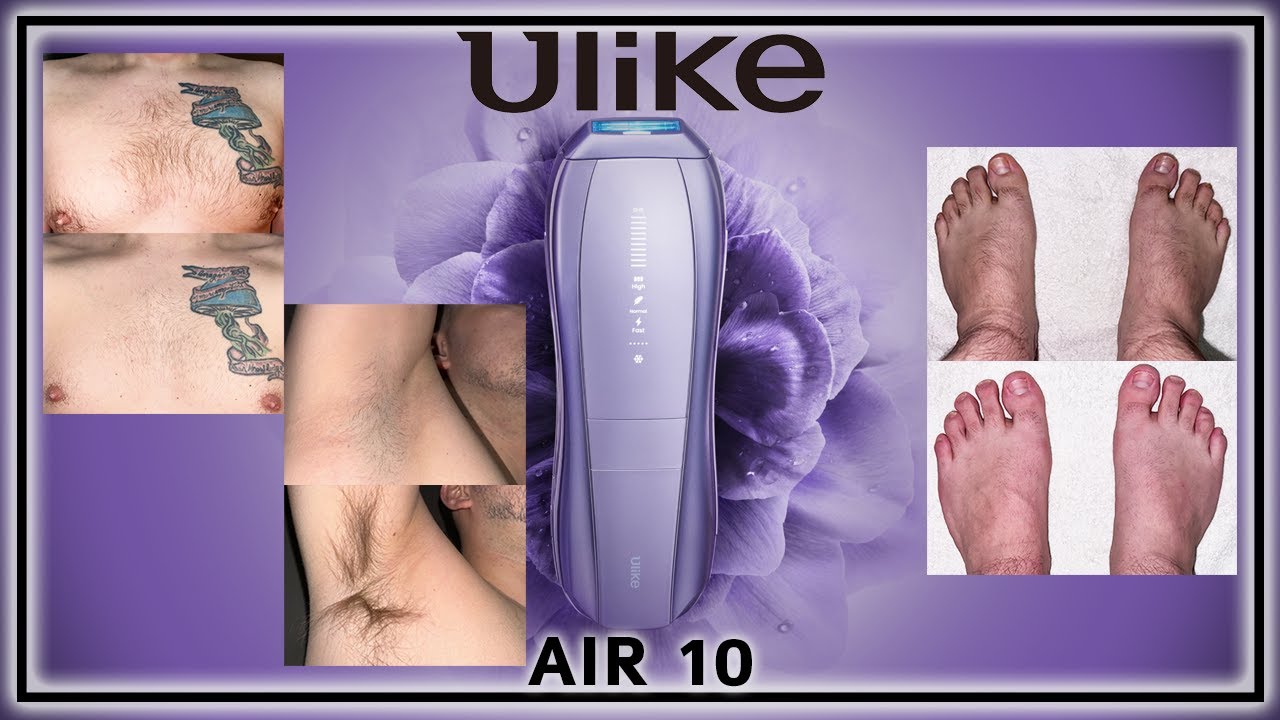Introduction: Understanding Hair Removal Technologies
With advancements in cosmetic treatments, options for hair removal have evolved significantly beyond traditional methods like shaving, waxing, or tweezing. Two of the most popular and effective technologies available today are Laser Hair Removal and Intense Pulsed Light (IPL). These state-of-the-art procedures target hair follicles to reduce hair growth and promise longer-lasting results.
Basic Principles
- Laser Hair Removal: Utilizes a specific wavelength of light to target melanin in the hair follicles, causing thermal damage that inhibits future growth.
- IPL: Uses a broad spectrum of light with multiple wavelengths, which is less focused but more versatile in targeting melanin in hair follicles and surrounding tissue.
Treatment Process
- Laser Hair Removal treatments involve the use of a handheld device that emits laser light pulses. The treatment area is usually small, and the process can be faster due to the precision of the laser.
- IPL devices emit scattered light, treating larger areas at once. This broad-spectrum light covers multiple follicles simultaneously but may require more sessions for optimal results compared to laser treatment.
Effectiveness
- Laser Hair Removal: Often reported to be more effective for individuals with fair skin and dark hair. The contrast between the skin tone and hair color allows the laser to target hair follicles more efficiently.
- IPL: Effective for various skin types, but particularly suitable for lighter to medium skin tones with dark hair. May require more sessions to achieve the same results as laser treatments.
Pain and Discomfort
- Patients may experience mild discomfort during both treatments. Laser Hair Removal might feel like a rubber band snapping against the skin, while IPL is often described as a slight stinging sensation.
Considerations
- Skin Tone: Darker skin tones should exercise caution with both methods. Specialized lasers, such as Nd:YAG, can be safer for darker skin.
- Hair Color: Both systems struggle with light-colored hair (blonde, white, gray).
- Treatment Area: Different body parts may respond better to one technology over the other.
Navigating the world of hair removal technologies requires understanding these foundational principles to make an informed decision tailored to one's specific needs and preferences.
How Laser Hair Removal Works: The Science Behind It
Laser hair removalconcentrated light beams
Laser Technology Components
- Light Wavelengths: Use of specific wavelengths suitable for melanin absorption.
- Pulse Duration: Optimized pulse durations to prevent skin damage.
- Cooling Mechanisms: Integrated cooling to increase comfort and skin protection.
Melanin Absorption
- Focusing on melanin in hair shafts to absorb light energy.
- This absorption differentiates laser from other hair removal methods.
- Effective for dark hair on light skin due to contrasting melanin levels.
Heat Generation
- Photothermal Effect: Conversion of absorbed light into heat.
- Thermal Destruction: Generated heat destroys the hair follicle.
- Selective Photothermolysis: Targets hair without affecting surrounding tissue.
Hair Growth Cycle
- Important to understand the growth phase for effective removal.
- Anagen Phase: Hair growth phase when follicles are most vulnerable.
- Multiple Sessions Required: All hairs not in the anagen phase simultaneously.
Treatment Specifics
- Sessions Required: Typically 6-8 sessions for noticeable results.
- Interval Between Sessions: 4-6 weeks to target new hair in the anagen phase.
- Skin Type Considerations: Adjust laser settings for various skin types to avoid complications.
Skin Response
- Post-treatment Redness: Common and temporary.
- Proper Aftercare: Sunscreen and hydration recommended.
- Risks of Hyper/Hypopigmentation: Managed through proper technique and settings.
Suitability for Different Hair Types
- Light vs. Dark Hair: Effectiveness dependent on melanin levels.
- Gray and Blonde Hairs: Less effective due to low melanin content.
Safety Measures
- Pre-Treatment Consultation: Essential for assessing skin type and medical history.
- Patch Test: Conducted on a small area to predict reactions.
- Regulated Equipment: Use of FDA-approved devices for safety assurance.
Advantages Over Traditional Methods
- Long-term reduction in hair growth.
- Precision in targeting unwanted hair.
- Decreased ingrown hairs and skin irritation compared to shaving or waxing.
By understanding these scientific principles, patients can better comprehend how laser hair removal provides an effective solution for long-term hair reduction.
The Mechanics of IPL: What You Need to Know
IPL, or Intense Pulsed Light, is a popular method for long-term hair reduction. Unlike traditional lasers, which use a single wavelength of light, IPL employs a broad spectrum of light wavelengths. Here's how it works:
How IPL Works
- Light Energy: IPL devices emit light that is absorbed by the pigment (melanin) in the hair.
- Conversion to Heat: The light energy converts to heat, which in turn targets and damages the hair follicles.
- Hair Growth Cycle: Since hair grows in different cycles, multiple treatments are often necessary to achieve optimal results.
Technological Components
- Handpiece: The hand-held device that delivers the pulses of light.
- Filters: These refine the light spectrum to target hair removal specifically, reducing the risk of skin damage.
- Cooling Mechanism: Many IPL devices incorporate cooling technology to minimize discomfort during treatment.
Treatment Protocol
- Preparation: Users are advised to shave the treatment area beforehand to ensure the light can reach the follicles effectively.
- Settings: IPL devices offer varying intensity levels to accommodate different skin types and hair colors.
- Pulsing: Devices pulse light in precise intervals; the duration and intensity can be adjusted based on individual needs.
Ideal Candidates
IPL is most effective for individuals with light skin and dark hair. This is due to the contrast between skin pigment and hair color, which allows the light to focus on the hair follicles more accurately.
Safety Measures
- Patch Test: A patch test is recommended to check for adverse reactions.
- Eye Protection: Protective eyewear should be worn to prevent eye damage from light exposure.
Advantages
- Versatility: IPL can treat large areas quickly, making it a time-efficient option.
- Multi-functional: Besides hair removal, IPL is also used for treating skin issues like pigmentation and spider veins.
Possible Side Effects
- Skin Redness: Temporary redness and swelling can occur post-treatment.
- Pigmentation Changes: Changes in skin color, either darkening or lightening, can happen but are usually temporary.
Understanding the mechanics of IPL can help in making an informed decision about whether it's the right hair removal method.
Comparing Laser Hair Removal and IPL: Pros and Cons
Laser Hair Removal: Pros
- Precision: Laser hair removal offers high precision as it targets dark, coarse hairs while leaving surrounding skin undamaged.
- Speed: Each pulse of the laser takes a fraction of a second and can treat multiple hairs simultaneously. Smaller areas such as the upper lip can be treated in less than a minute.
- Predictability: Many users experience permanent hair loss after an average of three to seven sessions.
- Longer lasting: Results tend to last longer compared to other hair removal methods, with many finding permanent reduction in hair growth.
Laser Hair Removal: Cons
- Cost: The upfront cost is usually higher than other hair removal methods, though long-term savings might be realized.
- Side Effects: Some might experience temporary discomfort, redness, or swelling.
- Time Commitment: Multiple sessions are required, often spread out over weeks or months.
- Skin Type Limitation: It’s most effective on light skin with dark hair.
IPL (Intense Pulsed Light): Pros
- Versatility: IPL can treat a larger area of skin in one session than laser hair removal.
- Cost-Effective: Generally, IPL treatments are less expensive per session compared to laser hair removal.
- Skin Rejuvenation: IPL can improve skin texture and minimize discoloration, offering added benefits beyond hair removal.
- Home Devices: There are home-use IPL devices available, providing convenience and privacy.
IPL: Cons
- Effectiveness: IPL does not penetrate as deeply as laser technology, which can make it less effective on thick, coarse hair.
- Multiple Sessions: A higher number of treatments may be required to achieve desired results.
- Side Effects: Possibility of temporary side effects such as redness, swelling, and sometimes blistering or bruising.
- Skin Type Limitation: Less effective on darker skin tones and very fair hair.
Additional Considerations
- Suitability for Hair and Skin Types: It is crucial to evaluate both treatments based on an individual’s specific skin and hair type.
- Consultation: Consulting a dermatologist or a hair removal specialist can help determine the most appropriate method.
- Pain Tolerance: Some may find one method more comfortable than the other, which can be a decisive factor.
Overall, understanding the pros and cons of each treatment method is vital in making an informed decision.
Skin Types: Which Treatment is Recommended for Different Complexions
Understanding the appropriate laser or IPL treatment for various skin types is crucial to achieving optimal results. Here's a detailed breakdown of which treatment suits different complexions:
Fair Skin (Type I-II)
-
Laser Hair Removal:
- Recommended Laser: Alexandrite Laser
- Fair skin tones are most compatible with Alexandrite lasers due to their light skin-pigment contrast.
- This method effectively targets hair follicles, minimizing the risk of burns or pigmentation changes.
-
IPL:
- Can also be effective but typically requires fewer sessions than laser for optimal results.
- However, IPL is a safe option with adjustable wavelengths to suit fair skin without risking damage.
Medium Skin (Type III-IV)
-
Laser Hair Removal:
- Recommended Laser: Diode Laser or Nd:YAG Laser
- For medium skin tones, Diode lasers are proficient due to their varied wavelength capabilities.
- Nd:YAG lasers offer a broader spectrum effectively targeting hair while being gentle on the skin.
-
IPL:
- IPL treatments may need careful wavelength adjustment to avoid burning or discoloration.
- Suitable but requires professional assessment for tailored treatment settings.
Dark Skin (Type V-VI)
-
Laser Hair Removal:
- Recommended Laser: Nd:YAG Laser
- Ideal due to its wavelength that penetrates deeply, bypassing the melanin in the skin.
- An excellent choice for reducing the likelihood of post-inflammatory pigmentation.
-
IPL:
- Not generally recommended for darker skin.
- Higher melanin absorption can lead to complications such as burns, pigmentation changes, and less effective hair removal.
Sensitive Skin
-
Laser Hair Removal:
- Type and intensity of lasers (e.g., Diode or Nd:YAG) can be adjusted based on skin sensitivity.
- Essential to have a professional assessment for closely monitored treatment sessions.
-
IPL:
- Potential to cause redness or irritation; therefore, a thorough skin assessment is critical.
- Lower-energy settings and additional cooling mechanisms during treatment can help mitigate adverse effects.
“Choosing the correct method tailored to one's skin type ensures not only effective hair removal but also the preservation of skin health and tone.”
Notes on Professional Consultation
- Always seek a consultation with a dermatologist or certified technician.
- Patch tests may be necessary to gauge skin reactions.
- Personalized treatment plans offer the best outcomes for varied skin types.
Hair Types: Best Techniques for Various Hair Colors and Textures
Different hair typeslaser hair removal
Dark Hair
- Laser Hair Removal: Ideal for people with dark hair. Laser devices such as Alexandrite and Diode work best because they target melanin, the pigment in the hair shaft.
- IPL: Also effective for dark hair but may require more sessions compared to laser. IPL targets hair pigment but is less focused than laser beams.
Light or Blonde Hair
- Laser Hair Removal: Generally less effective because of the low melanin content in light hair. Some advanced laser systems, such as the Nd:YAG, can be used, but results may vary.
- IPL: Similarly, IPL is less effective for light hair due to limited melanin. More sessions and higher intensity settings may improve results, but outcomes are usually less satisfactory.
Red Hair
- Laser Hair Removal: Red hair is challenging due to the type of melanin it contains (pheomelanin). Specialized lasers with higher wavelengths may offer minimal effectiveness.
- IPL: Not usually recommended for red hair. The lack of sufficient melanin affects the efficacy of IPL treatments.
Gray or White Hair
- Laser Hair Removal: Least effective since gray or white hair lacks melanin entirely. Most laser devices will not work on these hair types.
- IPL: Similarly ineffective due to the absence of pigment in the hair. Alternative hair removal methods like electrolysis might be more suitable.
Coarse Hair
- Laser Hair Removal: Very effective due to the higher melanin content and the thickness of the hair shaft, allowing lasers to target hair more efficiently.
- IPL: Effective but might take more sessions compared to laser. Coarse hair generally responds well to IPL because of its thickness.
Fine Hair
- Laser Hair Removal: Less effective for fine hair as it contains less melanin. Fine hair might require more sessions for visible results.
- IPL: Generally not recommended for fine hair. Limited melanin reduces the effectiveness of IPL treatments.
Curly or Frizzy Hair
- Laser Hair Removal: Effective but may require specialized laser settings to avoid skin irritation and achieve optimal results.
- IPL: Can be effective but with a risk of skin sensitivity. Custom settings and professional supervision are advised.
Straight Hair
- Laser Hair Removal: Highly effective, especially when hair is dark and skin tone is lighter. The melanin in straight hair allows easy targeting.
- IPL: Also effective for most tones of straight hair but may require additional sessions.
Understanding the interaction between hair color, texture, and these treatments is crucial for achieving the best results.
Pain and Discomfort: What to Expect from Each Treatment
Laser Hair Removal
-
Sensation During Treatment:
- Many individuals describe the sensation as a rubber band snapping against the skin.
- The pain level varies based on individual pain tolerance and the area being treated.
- Typically more intense in areas with denser hair or thinner skin, such as the upper lip and bikini line.
-
Pain Management:
- Some clinics use cooling gels or devices to minimize discomfort.
- Numbing creams may be recommended, particularly for sensitive areas.
- Post-treatment redness and swelling are common but usually subside within a few hours.
-
Side Effects:
- Temporary redness, swelling, or itching in the treated area.
- Some individuals report a mild sunburn-like sensation for a couple of days.
- In rare cases, blistering or temporary changes in skin color may occur.
IPL (Intense Pulsed Light)
-
Sensation During Treatment:
- Often described as a warm sensation, similar to mild pinpricks or a small elastic band snapping.
- Generally considered less painful compared to laser hair removal.
- The discomfort level can vary depending on individual pain tolerance and skin sensitivity.
-
Pain Management:
- Most IPL devices are equipped with cooling mechanisms to ease discomfort.
- Numbing creams may be less frequently needed but can be applied for additional comfort.
- Post-treatment sensations may include mild redness and warmth, typically resolving quickly.
-
Side Effects:
- Temporary redness and swelling are common but less intense than with lasers.
- Some might experience skin darkening or lightening, particularly if aftercare instructions are not followed.
- Rare side effects include blistering or scarring, often mitigated by following professional guidelines.
Comparative Notes
-
Pain Levels:
- Laser tends to produce sharper, more intense pain, especially on sensitive areas.
- IPL is generally less painful but still causes discomfort varying from person to person.
-
Post-Treatment Experience:
- Recovery and side effects are somewhat similar, with laser treatments potentially causing more pronounced immediate effects.
- Both methods usually allow individuals to return to daily activities almost immediately.
-
Duration of Discomfort:
- Discomfort from laser treatments might last a little longer compared to IPL.
- Follow-up care, like applying cooling agents and avoiding sun exposure, is crucial for both treatments.
Understanding the level of pain and discomfort associated with each hair removal method can help individuals make informed decisions based on personal pain tolerance and skin sensitivity.
Treatment Duration and Number of Sessions: Time Commitment
Laser hair removalIPL treatments
Laser Hair Removal
Laser hair removalmultiple sessions
- Initial Treatments: 6-8 sessions spaced 4-6 weeks apart
- Maintenance: Occasional touch-up sessions every 6-12 months
IPL
IPL treatments are usually less time-consuming per session, but the total number of sessions required tends to be higher. Like laser hair removal, the duration of each session can vary based on the size of the treatment area. IPL treatments often involve:
- Initial Treatments: 8-12 sessions spaced 3-4 weeks apart
- Maintenance: Periodic touch-ups every 6-12 months
Factors Influencing Treatment Duration
Several factorsIPL treatments
-
Hair Growth Cycle:
- Both treatments target hair in the active growth phase. Since not all hairs are in this phase simultaneously, multiple sessions are required.
-
Hair and Skin Type:
- Individuals with darker hair and lighter skin typically see faster results. Conversely, those with lighter hair or darker skin may need more sessions.
-
Treatment Area:
- Larger areas like the back or legs require longer sessions but fewer total sessions.
- Smaller areas like the upper lip or underarms are quicker per session but may need more overall treatments.
Appointment Scheduling
Patients should plan around the required time commitment for each treatment type. For busy individuals, the fewer sessions needed for laser hair removal might be preferable. On the other hand, the shorter session times typical for IPL treatments may appeal to those looking to fit appointments into a tight schedule.
By considering the duration and number of sessions, individuals can make a more informed choice between laser hair removal and IPL based on their personal time availability and treatment goals.
Safety and Side Effects: What You Should Be Aware Of
Both laser hair removal and Intense Pulsed Light (IPL) are medical procedures that can have side effects. It is crucial to understand the risks associated with each method to make an informed decision.
Laser Hair Removal Side Effects:
- Skin Irritation: Some individuals may experience redness, swelling, and mild pain in the treated area. These are usually temporary.
- Changes in Skin Color: Hyperpigmentation or hypopigmentation can occur. People with darker skin are more prone to these issues.
- Scarring: Though rare, scarring can occur if the treatment is improperly administered.
- Blistering: Blisters might develop, particularly if the laser settings are too high.
- Crusting: Skin in the treated area could crust, though it typically resolves with proper care.
IPL Side Effects:
- Skin Redness: Often, the skin may appear sunburned for a few hours following the treatment.
- Blistering: Similar to laser hair removal, IPL can cause blistering if settings are too intense.
- Swelling: Temporary swelling is a common side effect.
- Bruising: Some patients may experience minor bruising.
- Pigment Changes: People with darker skin tones may notice changes in skin pigmentation.
- Eye Injury: Protective eyewear is mandatory to prevent eye damage from the IPL light pulses.
Safety Considerations:
- Consultation is Key: A thorough consultation with a qualified specialist is essential for assessing skin and hair type suitability for either treatment.
- Patch Test: Performing a patch test can help identify any adverse reactions before undergoing full treatment.
- Technician Skill: Opt for treatments administered by seasoned professionals to minimize risks.
- Post-Treatment Care: Follow all post-treatment care instructions to ensure proper healing and minimize complications.
- Skin Types: Those with darker skin or certain skin types should seek specialized clinics experienced in treating a broader range of skin tones.
Understanding these safety aspects and being aware of potential side effects can significantly affect the decision-making process between laser hair removal and IPL.
Cost Consideration: Understanding the Financial Aspect
When evaluating the financial impact of laser hair removal versus IPL treatments, several factors come into play. Both treatments involve an initial investment and potential ongoing costs, which can vary based on individual needs and treatment areas.
Initial Cost
- Laser Hair Removal: Typically, the initial cost for laser hair removal is higher. The price per session ranges between $200 and $450. The total number of sessions required for optimal results can vary but usually falls between 6 to 8.
- IPL: Generally, IPL treatments are less expensive upfront. The cost per session ranges from $100 to $300. Similar to laser hair removal, multiple sessions are necessary, commonly between 6 to 10.
Factors Influencing Cost
- Treatment Area: Both laser and IPL costs fluctuate depending on the size of the area being treated. Larger areas like the back or legs incur higher costs, while smaller areas such as the upper lip or underarms are less expensive.
- Location: Geographic location significantly influences the price. Treatments in urban areas or premium clinics tend to be pricier compared to those in smaller towns or lesser-known establishments.
- Provider Expertise: The experience and reputation of the provider can impact the cost. More skilled practitioners may charge higher fees, but they often offer better precision and results.
Long-Term Expenses
- Laser Hair Removal: While the initial cost is higher, laser hair removal often results in longer-lasting hair reduction, which can reduce the need for future treatments or other hair removal methods.
- IPL: With IPL, some individuals might require maintenance sessions more frequently to sustain results, potentially increasing long-term expenses.
Financing and Discounts
- Package Deals: Both laser and IPL clinics frequently offer package deals for multiple sessions, resulting in cost savings over time.
- Membership Programs: Some providers offer membership programs or bulk pricing options, which can help spread out the cost and offer additional discounts.
Insurance Coverage
- Medical Necessity: In rare cases where hair removal is deemed medically necessary, some insurance plans may cover part of the expense. However, purely cosmetic treatments are generally out-of-pocket expenses.
Understanding the financial aspect of laser hair removal and IPL involves comprehensively evaluating both immediate and long-term costs. Comparing factors affecting pricing can help individuals make an informed decision that suits their budget and desired outcomes.
Post-Treatment Care and Maintenance
Caring for the skin after laser hair removal and IPL treatments ensures optimal results and minimizes side effects. Following post-treatment guidelines is essential for both methods to promote healing and maintain smooth, hair-free skin.
Immediate Aftercare
Right after the treatment, it is common to experience redness, swelling, or mild discomfort. Address these symptoms effectively:
- Cooling the Area: Apply a cold compress or ice pack to reduce swelling and soothe the skin.
- Avoiding Heat: Refrain from using hot showers, saunas, or steam rooms for at least 48 hours post-treatment.
- Avoiding Sun Exposure: Shield the treated area from direct sunlight and use a high SPF sunscreen to prevent UV damage.
Skin Care
Proper skin careresults
- Moisturizing: Keep the skin well-hydrated with a gentle, fragrance-free moisturizer to prevent dryness and flaking.
- Exfoliating: Start exfoliating the area gently after a few days to help shed treated hairs naturally.
- Skin Sensitivity: Use products for sensitive skin to avoid irritation or adverse reactions.
Activities to Avoid
Certain activitiesside effects
- Avoid Scratching: Refrain from scratching or picking at treated areas to prevent infection and scarring.
- Limit Physical Activity: Steer clear of heavy exercise for 24-48 hours to avoid excessive sweating and irritation.
- Postpone Hair Removal: Avoid any form of hair removal other than shaving, such as waxing or plucking, between sessions.
Scheduling Follow-Up Appointments
Consistency in treatment schedules is key for achieving long-term hair reduction. Patients need to:
- Adhere to Sessions: Attend all recommended follow-up sessions at intervals advised by the practitioner.
- Monitor Skin Changes: Report any unusual skin reactions or persistent discomfort to the provider promptly.
- Evaluate Results: Keep track of hair regrowth and overall skin condition to discuss progress during follow-up appointments.
Products and Ingredients to Use or Avoid
Certain topical productspost
- Beneficial Products: Opt for aloes vera gel, cooling gels with chamomile, and hydrocortisone cream for soothing relief.
- Harmful Ingredients: Avoid retinoids, glycolic acids, and alcohol-based products that can exacerbate sensitivity and irritation.
Long-Term Maintenance
Maintaining smooth skin after the initial treatment phase requires ongoing attention:
- Regular Maintenance Sessions: Schedule periodic maintenance treatments as recommended to ensure lasting results.
- Sun Protection: Continually use broad-spectrum sunscreen to protect newly treated skin from sun damage.
- Hair Growth Monitoring: Watch for any changes in hair growth patterns and adjust maintenance schedules accordingly.
These steps are critical to ensure effective results and maintain skin health post-laser hair removal or IPL treatments. Proper care and maintenance optimize the benefits and reduce the risk of adverse effects.
Real-Life Results: Before and After
Laser Hair Removal
Laser hair removalsubstantial hair reduction
Before Treatment:
- Hair Growth: Clients usually exhibit coarse and dark hair.
- Skin Condition: Skin may be relatively smooth but can have irritation from other hair removal methods.
After Treatment:
- Hair Growth: Significant reduction in hair density and thickness.
- Skin Condition: Smoother and less irritated, with a notable reduction in ingrown hairs.
IPL (Intense Pulsed Light)
IPL differs from laser hair removal by using a broad spectrum of light wavelengths. It diffuses energy that targets hair and can also treat other skin concerns.
Before Treatment:
- Hair Growth: Clients present with various hair types, from fine to coarse.
- Skin Condition: Similar to laser candidates, skin may show irritation from shaving or waxing.
After Treatment:
- Hair Growth: Moderate reduction in hair thickness and regrowth.
- Skin Condition: Improvements in skin tone and texture may be noticed, reducing blemishes.
Comparing the Outcomes
Duration and Frequency
- Laser Hair Removal: Generally requires 6-8 sessions. Results can last for months, with annual touch-ups.
- IPL: May need 8-10 sessions. Maintenance sessions might be more frequent.
Efficacy
- Laser Hair Removal: More effective on darker hair and lighter skin.
- IPL: Versatile but less effective on very dark or very light hair.
Side Effects
- Laser Hair Removal: Potential mild swelling and redness.
- IPL: May include temporary pigment changes and sensitivity.
Real Stories
Jessica's Experience: Jessica, with fair skin and dark hair, observed dramatic hair reduction through laser hair removal. After six sessions, her skin felt smoother with minimal regrowth.
Tom's Journey: Tom, using IPL for his mixed hair type, noticed his hair became finer over several treatments. He appreciated the added benefit of improved skin tone.
Conclusion
Both methods offer varying degrees of hair reduction, with outcomes dependent on individual skin and hair types. Your choice can be guided by these real-life results, aligning expectations with treatment capabilities.
Consultation: How to Choose the Right Practitioner
Selecting the right practitioner is crucial for achieving desired results with laser hair removal or IPL treatments. Here are essential factors to consider:
Research Qualifications
- Check Credentials: Ensure the practitioner has proper certification and training in laser hair removal and IPL techniques.
- Experience Matters: Look for practitioners with substantial experience in treating your specific skin and hair type.
Evaluate the Facility
- Reputation: Read reviews and testimonials to gauge the facility's reputation.
- Equipment Quality: Verify that the clinic uses modern, FDA-approved equipment.
Initial Consultation
- Skin Analysis: The practitioner should perform a thorough skin and hair analysis to determine the suitability of laser or IPL.
- Customized Plan: They should outline a treatment plan tailored specifically to your needs.
- Patch Test: A patch test is crucial to assess how your skin reacts to the treatment.
Ask Questions
- Safety Protocols: Inquire about the safety measures in place to minimize risks.
- Pain Management: Ask how pain during the procedure will be managed.
- Post-Treatment Care: Understand the recommended post-treatment care routine.
Compare Costs
- Price Range: Obtain a breakdown of costs and compare them with other practitioners.
- Package Deals: Some clinics offer package deals for multiple sessions, which might be more cost-effective.
Look for Red Flags
- Overpromising: Be cautious of practitioners who promise unrealistic results.
- Poor Hygiene: Ensure the clinic maintains high standards of cleanliness.
- Lack of Transparency: Avoid practitioners who fail to provide clear answers to your questions.
Follow-Up
- Regular Check-In: A good practitioner should offer follow-up appointments to monitor progress.
- Availability: Ensure they are available for any concerns or adverse reactions post-treatment.
Choosing the right practitioner entails thorough research, asking detailed questions, and trusting your instincts about their professionalism and qualifications.
Conclusion: Making the Right Choice for You
When deciding between laser hair removal and IPL, consider several key factors specific to individual skin and hair types.
Skin and Hair Type Suitability
- Laser Hair Removal: Often recommended for those with darker hair and lighter skin due to its precision. Especially effective for individuals with Fitzpatrick skin types I to IV.
- IPL: More versatile across a range of skin tones but generally less effective on very light or very dark skin. Best suited for those with lighter skin and darker hair.
Treatment Efficiency
- Laser Hair Removal: Typically requires fewer sessions because it targets hair follicles more intensely. Users often see significant hair reduction after 6-8 sessions.
- IPL: May require more sessions, averaging between 8-10 treatments. Results may take longer to become noticeable.
Pain and Comfort Levels
- Laser Hair Removal: Pain levels vary but are generally higher due to the concentrated energy of the laser. Cooling gels and numbing creams can help alleviate discomfort.
- IPL: Often described as feeling like a quick snap of a rubber band. Considered less painful but can still cause discomfort in sensitive areas.
Cost-Effectiveness
- Laser Hair Removal: Higher upfront costs per session, but due to fewer sessions needed, may be more economical in the long run.
- IPL: Lower initial costs, but the need for more sessions can make it less cost-effective over time.
Potential Side Effects
- Laser Hair Removal: Possible side effects include redness, swelling, and temporary discomfort. Rarely, blistering and pigmentation changes may occur.
- IPL: Similar side effects to laser treatments, including redness and swelling. Hyperpigmentation and hypopigmentation can also occur but are generally less pronounced.
Maintenance Requirements
- Laser Hair Removal: Requires maintenance sessions, typically once a year, to keep hair regrowth at bay.
- IPL: Maintenance sessions are also necessary and may be needed more frequently compared to laser treatments.
Considering these factors will assist in making an informed choice, ensuring the selected treatment aligns well with one’s personal needs and attributes.
